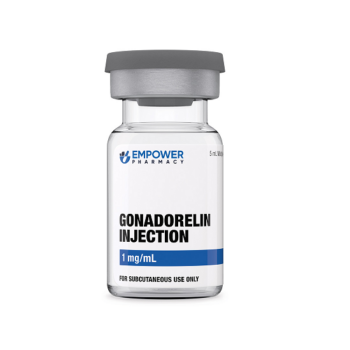Article Summary
Recent growth hormone research has identified genetic links to deficiencies and growth issues, while long-acting formulations aim to enhance patient compliance. Tailored treatment strategies based on factors like age and genetics show promise in optimizing therapy outcomes, alongside studies examining long-term safety and hormone interactions in disease states.Exciting Advances in Growth Hormone Research
Genetic findings, long-acting formulations, tailoring treatment strategies, and the long-term safety of growth hormone therapy are the basics when it comes to the most recent findings in growth hormone therapy research. If you are an integrative provider, you might be keeping on the cutting edge of innovations, constantly seeking new information to guide your patients. Over the past five years, some of the most recent developments in growth hormone (GH) research include some fairly major advancements. Keep reading for the top 5 findings from that recent research:
1. Genetic Findings
Genetic discoveries have revealed a number of genes and mutations linked to GH deficiencies and growth abnormalities. Understanding the underlying mechanisms and prospective targets for therapeutic interventions is made possible by the identification of these genetic variables.[1]
2. Long-Acting Formulations
To lessen the frequency of injections required for treatment, researchers are looking into long-acting GH formulations. These formulations seek to deliver sustained and more practical GH delivery, enhancing patient comfort and treatment adherence.[2]
3. Tailored Treatment Strategies for GH Therapy
Studies have stressed the value of tailored treatment approaches. Results can be improved, and benefits can be maximized by adjusting the course of treatment based on variables. These include age, gender, genetic profile, and therapeutic response.[3]
4. Emerging Studies Evaluating Long-term Safety, Adverse Effects, and Safety Monitoring
For the most part, research has examined the potential risks and long-term safety of GH therapy. It helps to improve treatment protocols and gain a better knowledge of the dangers involved with therapy. This requires understanding how GH treatment affects metabolic parameters, cardiovascular health, and cancer risk.[4]
5. The Body’s Growth Hormone in Combination with Other Hormones in Disease States
The potential correlation between GH and other hormones gives valuable insight. To understand the physiology of GH, research has been done evaluating its relationship with other hormones. For instance, studies examining the interaction between GH and insulin-like growth factor-1 (IGF-1) were conducted in children receiving liver transplants.[5] Liver transplantation improved body height, body mass, and GH/IGF-1 regulation for pediatric patients.[5]
Growth Hormone Research Developments
To get the latest details on developments in GH research, as the area is always changing, it is crucial to examine modern scientific journals or speak with an endocrinologist. Staying informed through modern scientific journals or engaging in discussions with an endocrinologist is essential to stay updated on the dynamic advancements in GH research. Learn more about the benefits and risks of Growth Hormone Therapy.
- Argente, J., Tatton-Brown, K., Lehwalder, D., & Pfäffle, R. (2019, September 6). Genetics of Growth Disorders—Which Patients Require Genetic Testing?. Frontiers. https://www.frontiersin.org/articles/10.3389/fendo.2019.00602/full
- Steiner, M., Frank, J., & Saenger, P. (2023, January 3). Long-acting growth hormone in 2022. Pediatric Investigation. https://onlinelibrary.wiley.com/doi/10.1002/ped4.12358#:~:text=We%20now%20have%20as%20of,is%20a%20real%20success%20story.
- Tornincasa V., Dixon D, Le Masne Q, Martin B, Arnaud L, van Dommelen P and Koledova E. Integrated Digital Health Solutions in the Management of Growth Disorders in Pediatric Patients Receiving Growth Hormone Therapy: A Retrospective Analysis. Frontiers in Endocrinology, 30 June 2022. Sec. Pediatric Endocrinology. Volume 13 – 2022. https://doi.org/10.3389/fendo.2022.882192 or https://www.frontiersin.org/articles/10.3389/fendo.2022.882192/full
- Johannsson G, Touraine P, Feldt-Rasmussen U, Pico A, Vila G, Mattsson AF, Carlsson M, Korbonits M, van Beek AP, Wajnrajch MP, Gomez R, Yuen KCJ. Long-term Safety of Growth Hormone in Adults With Growth Hormone Deficiency: Overview of 15 809 GH-Treated Patients. J Clin Endocrinol Metab. 2022 Jun 16;107(7):1906-1919. doi: 10.1210/clinem/dgac199. PMID: 35368070; PMCID: PMC9202689.
- V. Gautier, S., P. Shevchenko, O., M. Tsirulnikova, O., M. Kurabekova, R., & E. Pashkova, I. (2023). Growth Hormone and Insulin-like Growth Factor-1 in Children with Cholestatic Diseases and Pediatric Liver Transplantation. IntechOpen. doi: 10.5772/intechopen.108301 or https://www.intechopen.com/chapters/84654




